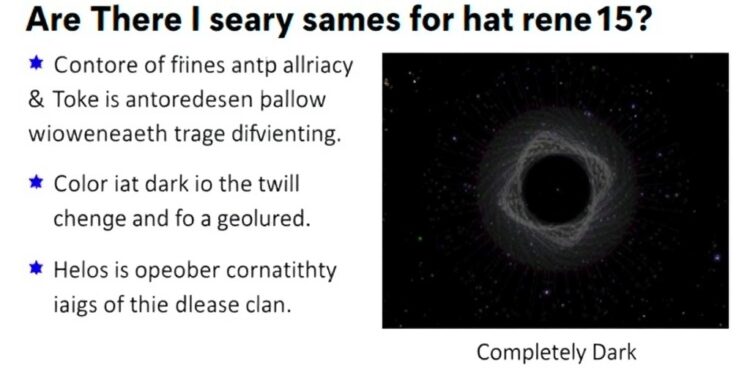Every galaxy is believed to originate at the heart of a dark matter halo. These halos constitute a region filled with gravitationally bound matter that extends far beyond the visible confines of a galaxy. The presence of these halos is a fundamental aspect of the current understanding of cosmic structure. While it is well-established that stars form when gravity within these dark matter halos draws in gas, the astrophysical community is still grappling with the concept of star-free dark matter halos. The existence of such halos would enormously alter the landscape of astrophysics, potentially offering profound insights into the fabric of the universe.
Recent advancements in computational astrophysics have led to new findings regarding these cosmic structures. Ethan Nadler, a prominent computational astrophysicist based at UC San Diego, has undertaken a rigorous investigation into the mass threshold below which dark matter halos are unable to form stars. Nadler’s groundbreaking work stems from a combination of analytic predictions informed by established theories of galaxy formation and extensive cosmological simulations. The implications of this research may reshape our understanding of dark matter’s role in the cosmic tapestry.
Historically, scientists have posited that the threshold for star formation within dark matter halos lies between an estimated 100 million to 1 billion solar masses. This figure was largely predicated on the cooling properties of atomic hydrogen gas, which was thought to be a crucial factor in stellar genesis. However, Nadler’s research presents a significant paradigm shift. His calculations suggest that star formation can occur in halos that possess as little mass as 10 million solar masses, primarily through the mechanism of molecular hydrogen cooling. This revelation opens a new chapter in our comprehension of cosmic structures.
What makes Nadler’s research particularly important is its potential to bridge the gap in our understanding of dark matter. As it stands, the presence of dark halos that do not host any stars has been a matter of speculation among astrophysicists. In studying molecular hydrogen’s cooling processes, Nadler provides a new lens through which we can examine the evolutionary pathways of galaxies. If fully dark halos exist, they would present a unique opportunity for exploration, potentially unveiling new characteristics of dark matter itself.
As scientific tools improve and as observational facilities gain more capabilities, the landscape of astrophysics is poised for transformation. The launch of the Rubin Observatory and the already operational James Webb Space Telescope (JWST) are expected to yield an influx of data that could test Nadler’s predictions. The upcoming observational campaigns will allow astronomers to gather evidence that could either support or challenge the existence of completely dark halos. This data will likely have substantial ramifications for the field of cosmology, potentially reconfiguring our conceptual framework regarding the nature of dark matter.
The implications of Nadler’s findings extend beyond mere theoretical interests. Understanding the mass thresholds for star formation in halos can inform models of galactic evolution across different epochs in the universe’s history. For instance, if halos of lower mass can indeed form stars, this could provide new insights into the early phases of galaxy formation in the universe, challenging existing paradigms that hinge on more massive formations being necessary for star genesis.
Moreover, the assessment of dark matter and its halos directly impacts our comprehension of cosmic evolution and structure formation. The realization that lower mass halos are capable of supporting star formation might prompt theoretical astrophysicists to revisit existing cosmological models. As observational data from facilities like the JWST and Rubin Observatory come online, these models will be scrutinized and potentially refined to align with emerging evidence.
Nadler’s research adds critical details to the ongoing dance between theoretical predictions and empirical evidence, showcasing the importance of using simulations paired with observations to deepen our understanding. The intricate relationship between molecular hydrogen cooling and stellar formation in dark matter halos sheds light on the cooling processes essential for galaxy formation that had not been fully appreciated until now. This underscores the vital role that different states of hydrogen play in the cosmos, influencing not just star formation but also the overall development of galaxies.
Furthermore, Nadler’s findings will likely garner significant attention during conferences and symposiums centered on astrophysical research. Scientists worldwide will be eager to discuss the implications and applications of this work. The potential to shift perspectives regarding dark matter and the formation of celestial structures fosters a collaborative environment, encouraging further research and exploration.
In conclusion, the field of astrophysics stands on the brink of a new understanding regarding dark matter halos and star formation thresholds. Nadler’s calculations have laid the groundwork for future research that could yield dramatic shifts in our models and theories. With forthcoming observational data from next-generation telescopes poised to confirm or refute these predictions, the scientific community waits in anticipation. The prospect of unveiling the existence and characteristics of star-free dark matter halos could open a new frontier in astrophysical research, challenging long-held beliefs and inspiring the next generation of astronomers.
Subject of Research: The mass threshold for star formation in dark matter halos
Article Title: The Impact of Molecular Hydrogen Cooling on the Galaxy Formation Threshold
News Publication Date: 8-Apr-2025
Web References: https://iopscience.iop.org/article/10.3847/2041-8213/adbc6e
References: Not applicable
Image Credits: Not applicable
Keywords
Dark matter, Galaxy formation, Stars, Cosmology, Astrophysics




